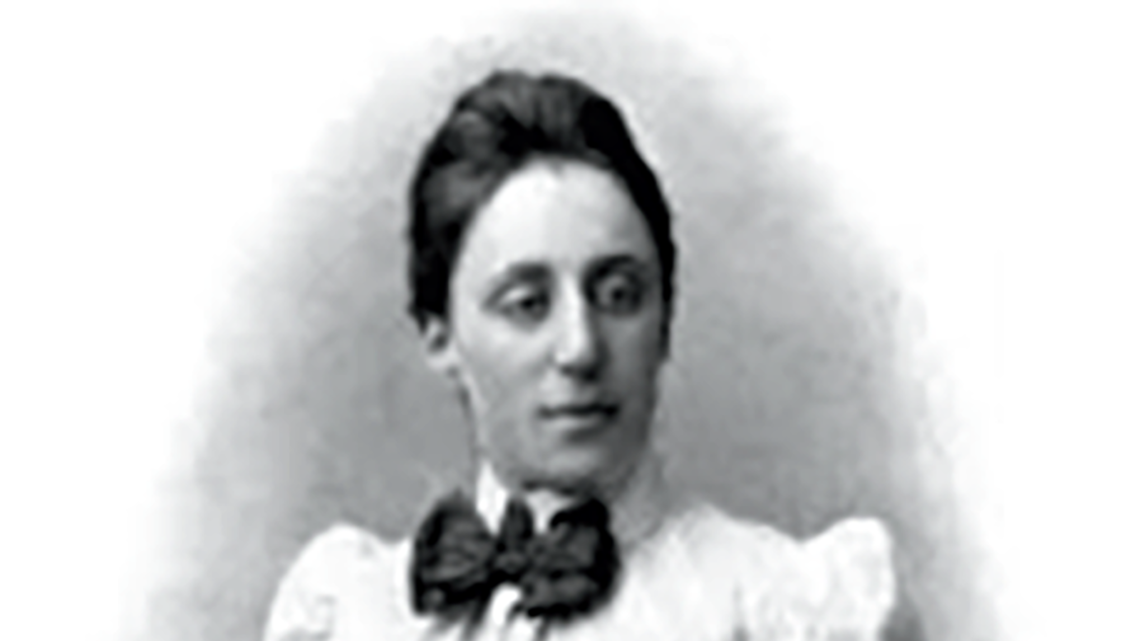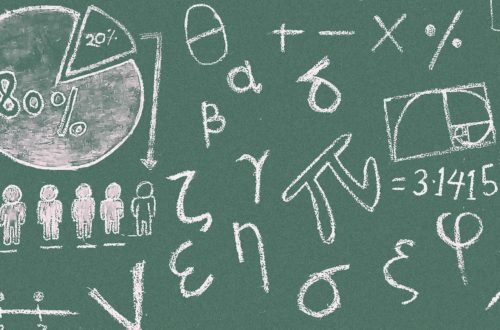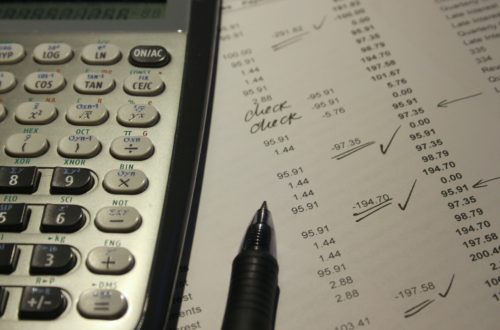Shenaé Richards
Emmy Noether, circa 1900–10.
(Source: www.agnesscott.edu/lriddle/women/noether.htm.)
If one proves the equality of two numbers a and b by showing first that “a is less than or equal to b” and then “a is greater than or equal to b,” it is unfair, one should instead show that they are really equal by disclosing the inner ground for their equality.
Emmy Noether
Emmy Noether was a German mathematician who was born on March 23, 1882, and passed away on April 14, 1935. Though many people know her as Emmy, her full name was Amalie Emmy Noether.
In 1900, Noether was certified to teach English and French at girls’ schools; instead, she studied mathematics at the University of Erlangen. Back then, women could only audit classes (with permission from the instructor). Auditing a course means that one attends classes but is not required to submit any coursework or write exams, which means that women did not receive credits for a course. Despite this,
Noether audited classes at the University of Göttingen in 1903/04. In 1904, the University of Erlangen allowed women to be full students, so she returned there to study mathematics and earned a PhD. She stayed there to conduct research (without remunera-tion) while assisting her father, Max Noether, also a well-known mathematician.1
In 1915, Noether was invited to the University of Göttingen to work with Felix Klein and David Hilbert on Einstein’s general relativity theory (Kidskonnect 2018). In 1918, she published Noether’s theorem, which “considered Hilbert and Einstein’s problem: that General Relativity Theory seemed to break the law of conservation of energy” (Famous Scientists 2015). She discovered that there is a conservation law for every invariant (such as symmetry) in the universe (Famous Scientists 2015); every differentiable symmetry of a physical system’s action has a corresponding conservation law.2
Einstein was impressed with Noether’s work, writing to Hilbert that her theorem was a piece of “penetrating mathematical thinking.”3 At the time, her work was somewhat controversial because of its abstractness, but over the years, it has proven to be useful in many areas of theoretical physics, engineering and crystallography, not just applicable to the theory of relativity. Noether’s theorem is still in use today. For example, Kleinert (2016) discusses the theorem in relation to point mechanics, continuous symmetries and conservation law, alternative derivation, displacement and energy conservation, momentum and angular momentum, and translational invariance in space.
Though the formula is not used in most K–12 mathematics classes, Noether’s theorem comes up when introducing students to the real number line’s symmetry or how number line points become arbi-trarily close to each other. The theorem also demon-strates a clear relationship between quantities con-served in physics (such as energy and momentum) and physical symmetries.
During this time, Noether also published several papers on theoretical algebra, working with algebraist Ernst Otto Fischer, and became increasingly interested in abstract algebra. She would go on to make her most important and substantial contributions in this area of mathematics.
After the success of Noether’s work on the general relativity theory, she earned a position as a lecturer at the University of Göttingen in 1919, and in 1922, she began receiving a small salary. She was considered to be one of the most formidable mathematics instructors at the university.
Throughout the 1920s, Noether continued to work on new mathematical theories, especially in abstract algebra. In 1927, she started to focus on linear transformations in algebra and how they could be applied to commutative number fields. She then “investigated the structure of noncommutative algebras and their application to commutative fields by means of cross product (a form of multiplication used between two vectors).”4

In 1933, when the Nazis took power, Noether and many other Jewish professors at the University of Göttingen were dismissed. Noether moved to the United States to become a mathematics professor at Bryn Mawr College. Unfortunately, she passed away
suddenly due to complications from surgery.5 Though she was only 53 years old, she left her mark as a female mathematician. After World War II, the University of Erlangen paid tribute to Noether by naming a co-ed gymnasium that supported female mathematicians in her honour (Kidskonnect 2018).
Noether “is best known for her contributions to the development of the then-new field of abstract algebra” (American Physical Society 2013). Einstein referred to her as “the most significant creative mathematical genius thus far produced since the higher education of women began” (American Physical Society 2013). Throughout her career, she worked as a researcher and a teacher, published over 40 papers, and taught at several universities. Moreover, Noether’s theorem has proven enormously useful in theoretical physics.
Notes
- Encyclopaedia Britannica Online, sv “Emmy Noether,” www.britannica.com/biography/Emmy-Noether (accessed October 21, 2021).
- Encyclopaedia Britannica Online, sv “Emmy Noether.”
- “Emmy Noether (1882–1935),” Department of Physics, University of Virginia, http://galileo.phys.virginia.edu/classes/usem/Origin/notes/04/noether.html (accessed October 21, 2021).
- Encyclopaedia Britannica Online, sv “Emmy Noether.”
- Encyclopaedia Britannica Online, sv “Emmy Noether.”
Achieving her goal of becoming a teacher and educat-ing young minds, Shenaé Richards graduated from Mount Royal University in 2021. She is eager to learn more about female mathematicians and the hard work and dedication it took for them to shine.
References
American Physical Society (APS). 2013. “March 23, 1882: Birth of Emmy Noether.” APS News 22, no 3 (March): 2. Also available at www.aps.org/publications/apsnews/201303/physicshistory.cfm (accessed October 21, 2021).
Famous Scientists. 2015. “Emmy Noether.” Famous Scientists: The Art of Genius. www.famousscientists.org/emmy-noether/(accessed October 21, 2021).
Kidskonnect. 2018. “Emmy Noether Facts and Worksheets.” https://kidskonnect.com/people/emmy-noether/ (accessed October 21, 2021).
Kleinert, H. 2016. “Continuous Symmetries and Conservation Laws: Noether’s Theorem.” In Particles and Quantum Fields, 619–59. Berlin: World Scientific.






